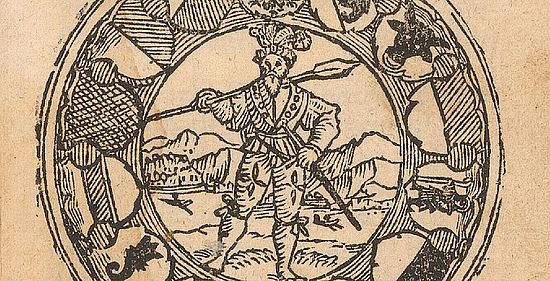
Sara Steffen«Von der Eydgnoschafft will ichs heben an […]». Printed Ballads as (Vocal) Media of Alliance Politics in Sixteenth-Century Switzerland
While there is a growing number of studies which bring attention to the different functions of songs and vocal/oral communication in popular political culture, printed ballads (Liedflugschriften) have scarcely been considered as media of political communication in Swiss historiography to date. However, a considerable number of surviving ballads bear witness to the fact that this particular medium was often used to relate information pertaining to “internal politics” between the thirteen cantons of the Swiss Confederacy and their associates (Zugewandte Orte) in the early modern period.
The PhD project centres around such popular printed ballads and their uses in and effects on what could be termed “alliance practices” within the 16th-century Swiss Confederacy, i.e. the negotiation and repeated actualization of the various alliances between the thirteen cantons of the Confederacy and their associates. On the one hand, the study will investigate the medialization of these alliances in printed ballads, focusing not least on intermedial references, as they manifest themselves, for instance, in the practice of contrafactum as well as in the various ways of alluding to and quoting other media “genres” such as chronicles, popular prints in prose and rhyme etc. On the other hand, the project will take into account contemporary discussions at the Swiss Federal Diets about the effects of printed ballads on confederate alliances, examining the media practices and agents that become visible in these discussions. As part of the overarching SNF-funded research project “Vocal Power – Macht der Stimme”, particular attention will be paid to vocal practices such as singing and reading aloud. Overall, the study seeks to contribute to the understanding of how media shaped Swiss “internal politics” in the 16th century.
Supervisor: Prof. Dr. Jan-Friedrich Missfelder
Image: Manuel, Hans Rudolf: Ein hüpsch nüw Lied, unnd fründtliche Warnung an ein lobliche Eydgnoschafft [Bern: Samuel Apiarius, 1557], Zentralbibliothek Zürich, 18.1984,2, https://doi.org/10.3931/e-rara-49101
